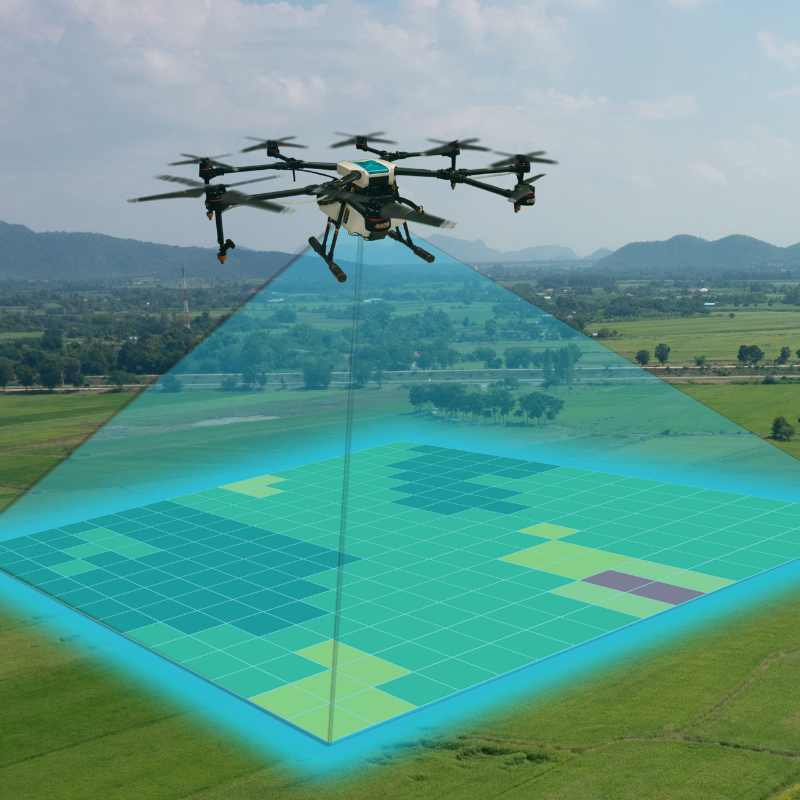
Key Considerations for Nighttime Agricultural Drone Operations
Operating agricultural drones at night requires heightened caution due to reduced visibility and environmental challenges. Below are critical guidelines to ensure safety, efficiency, and compliance during nocturnal missions:
1. Pre-Flight Preparations for Night Operations
- Lighting and Visibility:
- Equip the drone with high-intensity anti-collision lights (red/white/green) and strobe lights to enhance visibility. Ensure lights are operational before takeoff.
- Use ground markers (e.g., reflective cones or LED stakes) to outline the takeoff/landing zone and flight boundaries.
- Weather and Environmental Checks:
- Avoid flying in fog, heavy dew, or precipitation, as moisture can damage electronics and reduce visibility.
- Confirm wind speeds are below 3 Beaufort (12–19 km/h) to maintain stable flight.
- Equipment Readiness:
- Charge batteries fully and carry spares. Night operations often require longer flight times due to slower manual navigation.
- Test night vision tools (e.g., thermal imaging cameras or FPV goggles with night mode) if available.
2. Operational Adjustments for Low-Light Conditions
- Flight Path Planning:
- Pre-program GPS waypoints using geofencing software to automate routes and minimize manual control errors.
- Reduce flight speed by 30–50% compared to daytime operations to account for slower reaction times.
- Height and Distance Management:
- Maintain a lower altitude (1–2 meters above crops) to improve spray accuracy and reduce drift.
- Increase the distance between flight lines by 20–30% to compensate for reduced visibility of overlapping areas.
- Pesticide Application:
- Use fluorescent dyes in pesticide solutions to track coverage under UV lights (if applicable).
- Adjust spray nozzles to a finer mist to prevent over-application in low-light conditions.
3. Safety and Emergency Protocols
- Illumination and Communication:
- The pilot and ground crew must wear headlamps with red-light mode to preserve night vision. Use two-way radios for clear communication.
- Assign a spotter with binoculars to monitor the drone’s position and alert the pilot to obstacles.
- Battery and Signal Monitoring:
- Set battery alerts at 40% capacity to allow time for a safe RTH (return-to-home) maneuver.
- Ensure the remote controller has a strong signal (avoid interference from electronic devices or metal structures).
- Collision and Crash Prevention:
- Avoid flying near unlit obstacles (e.g., power poles, trees). Use terrain-awareness systems if available.
- If the drone loses signal, activate RTH immediately and shine a high-powered spotlight toward its last known location.
4. Post-Flight and Maintenance
- Drone Inspection:
- Clean the drone thoroughly to remove pesticide residue and moisture. Check for water ingress in motors, batteries, and connectors.
- Inspect propellers for cracks or debris, as low-light conditions increase the risk of collisions.
- Data Logging:
- Review flight logs to identify deviations from the planned route or unexpected battery drain.
- Document any obstacles encountered to improve future mission planning.
5. Regulatory and Legal Compliance
- Permits and Restrictions:
- Check local regulations for nighttime drone operation permits. Some regions prohibit flights after sunset without special authorization.
- Adhere to noise restrictions to avoid disturbing nearby communities.
- Insurance and Liability:
- Ensure your liability insurance covers nighttime operations, as risks (e.g., collisions, crop damage) may be higher.
6. Crew Training and Coordination
- Night-Specific Training:
- Complete simulated night flights in a controlled environment to practice navigation and emergency responses.
- Train the crew in first aid for electrical or chemical exposures, as accidents may be harder to detect in the dark.
- Team Roles:
- Assign a safety officer to oversee compliance with protocols and manage interruptions (e.g., unexpected wildlife or pedestrians).
By prioritizing lighting, automation, and crew readiness, nighttime agricultural drone operations can be conducted safely and effectively. Always consult local aviation authorities and equipment manuals for region-specific guidelines. Safety first—never compromise visibility or preparation for expediency.
